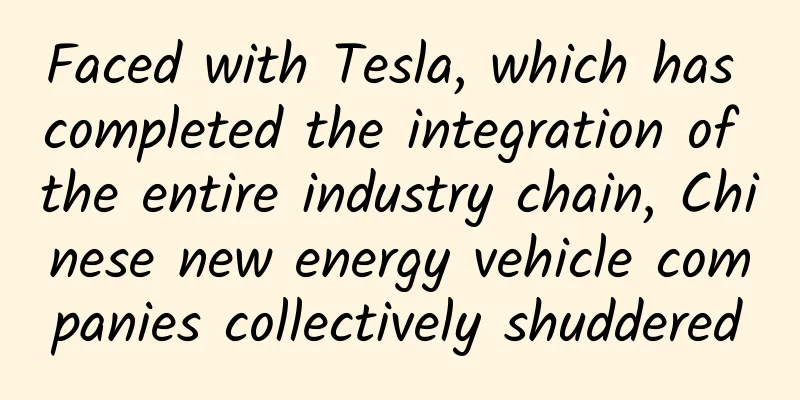Alchemy has gone from legend to reality? How long can the "nobleness" of natural gold last?

|
At the beginning of 2024, the exchange of specialties between Erbin and Jiangxi made netizens exclaim, "Why don't you tell me about this?" and spontaneously launched a nationwide "agricultural survey". The survey was full of surprises, and even in some non-agricultural fields, many "new specialties" that were beyond everyone's cognition were discovered. Henan, a province in the Central Plains known for its grain production, has delivered a glittering answer sheet. According to statistics, China's annual production capacity of artificial diamonds accounts for more than 50% of the world's total, of which more than 90% is in Henan. Henan's Zhecheng County, known as the "capital of artificial diamonds," produces 1.5 billion carats of diamond single crystals annually. In addition, the technology of artificial diamonds has matured to the point where they are indistinguishable from the real thing. As a result, international diamond prices have also "diveped," and "diamonds are forever, and one diamond will last forever" has long become a thing of the past. This change makes people wonder, since diamonds can be artificially produced, is it possible to "bring down" the unit price of gold, a "hard currency" that has long occupied an important position in the marriage market and even the entire financial market and whose unit price has continued to climb to new heights, through artificial mass production? Placer gold Something from outer space or a gift from the earth? Long ago, humans have made countless attempts to "manufacture gold". Whether it is the refining of gold from cinnabar in "Records of the Grand Historian" or the secret method of "turning stone into gold" by medieval alchemists, they are all considered "false propaganda" in modern times. If we choose to copy the homework of artificial diamonds, then we can artificially restore the formation process of gold, and it is possible to make artificial gold a reality. Therefore, if we want to artificially make gold, the first question to be answered is - "How is gold formed?" Where does the gold on Earth come from? The original gold is the "last afterglow of stars", which comes from the fusion of stellar nuclei in the universe. When a star dies, violent astronomical phenomena such as supernova explosions or neutron star mergers will occur, releasing huge amounts of energy and matter, including heavy elements such as gold. These heavy elements drift in the universe with dust and gas, and eventually some of them come to Earth. At the beginning of the Earth's formation, the Earth was in a molten state due to the heat energy generated by the frequent impact of asteroids. Due to the high density of gold, it gradually sank into the Earth's interior during this process, and only a very small amount remained on the Earth's surface. Then, during the 4.6 billion years of the Earth's evolution, the movement of the Earth's plates brought some gold to the surface through underground magma, and after cooling, it formed a gold-bearing mineralization belt. This part of gold that "sees the light of day again" can be divided into vein gold and placer gold according to the reasons of its formation. The so-called vein gold is formed in the rock vein, mainly in the gold-bearing quartz vein deposits of medium and low temperature hydrothermal origin. When the ore contains natural gold, the gold will be hidden in the rock in the form of granules or microscopic particles. In addition to natural gold, this kind of deposit also often contains pyrite, chalcopyrite, arsenopyrite and other minerals; while placer gold is formed because gold has a strong resistance to chemical weathering. Under the physical weathering effects such as external temperature changes and water erosion, the rocks become broken, and the tiny gold particles originally existing in the rocks are retained in the soil layer, or are washed away by the water and precipitated in the low-lying areas at the bottom of the riverbed or in the shallows of the ocean, thus forming placer gold. However, even in different forms, the birth of gold is closely related to nuclear fusion and nuclear fission. So under current technological conditions, is it possible to produce gold through nuclear fusion and thus achieve the goal of artificial gold? The answer is yes. Striking gold or fishing for gold in the ocean? In 1941, Dr. Bainbridge of Harvard University led a research team to successfully use the "slow neutron technology" for the first time to transform mercury (element 80), which has an atomic number one greater than gold, into gold (element 79). Coincidentally, nearly 40 years later, in 1980, researchers at the Lawrence Berkeley National Laboratory in the United States used the same method to transform bismuth (element 83) into gold (element 79). The tool they used to "produce gold" was the high-energy particle accelerator. Large Hadron Collider (conceptual image) Everything in the world is made up of atoms, and atoms are made up of nuclei and extranuclear electrons. The number of protons in the nucleus determines what element the atom is. According to this principle, gold contains 79 protons. We only need to find a way to create a nucleus with 79 protons to successfully prepare artificial gold. The two experiments mentioned above were conducted by American scientists using the principle of an atom collider, using elements with a similar number of atoms to gold, and using the method of nuclear collision to generate artificial gold. In 1997, Japanese scientist Takaaki Matsumoto once again created artificial gold through nuclear seed transformation technology. He used high-energy gamma rays to irradiate 1.34 tons of mercury for 70 days, causing the mercury to lose a proton and become a new atom, and finally obtained 744 grams of gold after the experiment. It seems that it is not difficult to make artificial gold. However, the increasingly expensive price of gold clearly proves that these methods have not been "popularized". So, what exactly is the reason that prevents artificial gold from becoming popular? It is a huge time and economic cost, and an extremely low input-output ratio. First of all, the cost of using high-energy particle accelerators is too high. Researchers found that it takes longer to make 1g of gold than it takes for nuclear fusion to form gold! Secondly, after switching to an atom collider, its randomness increased greatly, and the proportion of gold obtained in the experiment was less than 40%. However, Matsumoto Takaaki's nuclear mutation technology involves nuclear reactions, and the huge energy loss is staggering. According to Matsumoto Takaaki, the experiment cost a total of 150 million yen (about 10 million yuan), and in the end only 744 grams of gold (about 280,000 yuan) was obtained. The experimental cost of such a laborious production method has far exceeded the actual value of the item, and the experimental conditions are extremely harsh, and it does not have the potential for mass production. Since the artificial route is not feasible, is it feasible to choose "open source"? In addition to the surface, there is also a large amount of gold in the ocean. It is estimated that the total reserves of gold in the ocean are about 10 billion tons. So far, humans have only mined 170,000 tons of gold from land mines, which is only a "drizzle" compared to the reserves of gold in the ocean. However, it is not easy to be a porter of "gold in the sea". Since the concentration of gold in water is extremely low, generally only 0.001~0.5 mg/ton, with an average of 0.0112 mg/ton, extraction is extremely difficult. In addition, gold in seawater is mainly in a soluble non-ionic state, and ionic or granular gold only accounts for about 20% of the total amount of gold in seawater. Through adsorption, ion exchange and precipitation methods, people have made some attempts to extract gold from seawater. For example, after the First World War, a German scientist took about 4,000 water samples for testing and extraction experiments, and finally proved that extracting gold from seawater is not commercially feasible, and the cost of extracting gold is much more expensive than gold itself; in the 1890s and the early 20th century, people in the United States and the United Kingdom claimed to have successfully extracted gold from seawater, but later it was also proved to be a lie. In general, due to technical and cost limitations, the dream of artificial gold is not feasible in reality. In addition to further improving the mining efficiency of natural gold, recycling the recycled gold in existing gold products or gold-containing accessories is still the mainstream method at this stage. It is understood that about 200 grams of gold can be extracted from each ton of used mobile phones. Many people vividly describe it as "the next gold mine is hidden in the mobile phone." Artificial gold, a dream of mankind "since ancient times", still depends on further technological progress and space development. |
<<: Don't be fooled by beauty salons! Your face doesn't need deep cleansing!
>>: As the top snack during Qingming Festival, how did Qingtuan become so “green”?
Recommend
You may not think that these symptoms are related to lack of sleep →
Many people know that "you will yawn if you ...
Can Apple ignite the wearables market?
Can Apple reverse the current downturn in the wea...
The equivalent of the Earth's 12-year hot and cold cycle! Who "directed" Jupiter's magical "mirror climate"?
40 years of research confirms Jupiter's anoma...
Apple's officially certified mobile phone cases are here, what do you think?
[[139342]] Apple has launched an activity page ca...
Can penguins get enough sleep if they sleep 10,000 times a day for four seconds each time? | Nature Trumpet
Welcome to the 49th issue of the Nature Trumpet c...
It's not just you who miss Kobe, these brands do too!
On April 14, 2016, Kobe played the last game of h...
Highlight the key points! All advertising resources in iQiyi’s information flow!
The latest data from iResearch MUT in April shows...
2019 traffic growth inventory!
2019 has not been an easy year, so today we will ...
Snapdragon 820 vs. Exynos 8890: Which one is better?
Preface: Apple A9 and HiSilicon 950 are not within...
Hahahahahaha! The hilarious commentary is here again! Why does everyone love Wang Meng?
Expert of this article: Zhao Wei, deputy chief ph...
GAC New Energy Aion LX, China's most technologically advanced luxury car, will be officially launched on October 17
Recently, we learned from GAC New Energy that the...
Can Google still make a living if it returns to the Chinese market?
Recently, there is news that Google has made a pr...
Operations Uncle: Why did the “single dog attribute” flood the circle of friends overnight?
Last night, yes, it was last night, the operation...
Russian taxi drivers complain about Chinese cars. Is this a prejudice of trolls or a solid fact?
The rise of China's auto industry and the sur...









